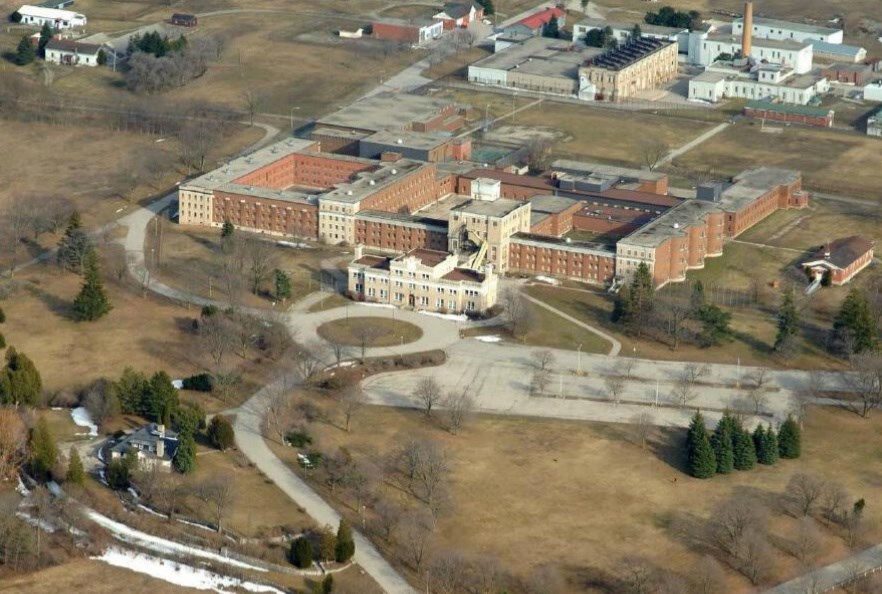Two decades after it closed, the provincial government is preparing to sell the former Guelph Correctional Centre lands on York Road, part of the planned Guelph Innovation District (GID) development initiative.
Provincial officials recently requested the city begin the process of considering various buildings and features for protection under the Ontario Heritage Act, said Melissa Aldunate, the city’s manager of policy planning and urban design – a requirement before those lands can be put on the market.
“I think the first thing anyone needs to be aware of is how significant this site is for a massive social change,” Heritage Guelph chair Brian Skerrett said in an email. “Merely establishing this prison here was a radical philosophical departure from what had preceded it and really a massive social agenda: it shifted the lens of dealing with crime from one of punishment to one of rehabilitation; hence the deliberate use of the word reformatory (in its original name).
“I would argue that social history alone sets it apart from any other detention facility in the province, but then there’s the sheer magnitude of the enterprise: an 840-acre prison working without armed guards, that incorporated a dairy farm, a cannery, a tailor shop, a woolen mill, a mattress factory, an orchard …”
A city staff report and recommendation is slated to be presented to Heritage Guelph for consideration on April 12, or during a special meeting held before that. The committee’s decision will be part of a report with recommendation to city council on June 14.
“Whether it’s designated as individual buildings or as a landscape is what we’re working through with Heritage Guelph right now,” said Aldunate.
During the June meeting, staff will also seek council’s direction regarding the potential for a Heritage Conservation Easement Agreement with all current and future owners ,which means they would require permission from the Ontario Heritage Trust to make alterations that could affect the property’s heritage features.
“The province has indicated that they may require an easement to be registered on title,” said Aldunate.
The reformatory was fully decommissioned in 2001 and the property has been vacant since 2014, when the Ministry of Community Safety and Correctional Services completely left the site, city staff explained in a presentation to Heritage Guelph on Monday and posted online. With no identified uses for it, the provincial government has declared the property to be surplus.
"A heritage review is among a number of activities Infrastructure Ontario undertakes to gain a better understanding of potential future uses of the property," explained Infrastructre Ontario communications advisor Alanna Myles in an email to GuelphToday, confirming the province's interest in reading the former reformatory lands for sale.
The province owns much of the original reformatory lands, but no longer all of it. Through the years parcels have been sold off, with pieces of it now owned by the City of Guelph, along with Cargill.
Some of the features being considered for heritage protection are on those parcels, features that include buildings to bridges to stone walls. The city is also considering designating features on the main property that aren’t on the province’s list of items needing protection.
“The heritage committee, when they have toured the property and as they’re doing their research, have identified a couple of resources that are outside the province’s identified cultural heritage landscape, so the heritage committee is considering those resources at the same time,” explained Aldunate.
Guelph Innovation District is planned to include a mix of employment, residential, commercial and natural heritage uses. Much of the planned district property – the former home of the Wellington Detention Centre and Guelph Turfgrass Institute – which is also owned by the province, is already up for sale.
The GID encompasses 328.6 acres of land bordered by Stone Road East, Victoria Road South and York Road. That total includes 100 acres of protected natural areas.
At one point the city looked into buying the land from the province and selling it itself, but decided that plan posed too much of a financial risk for the city.
